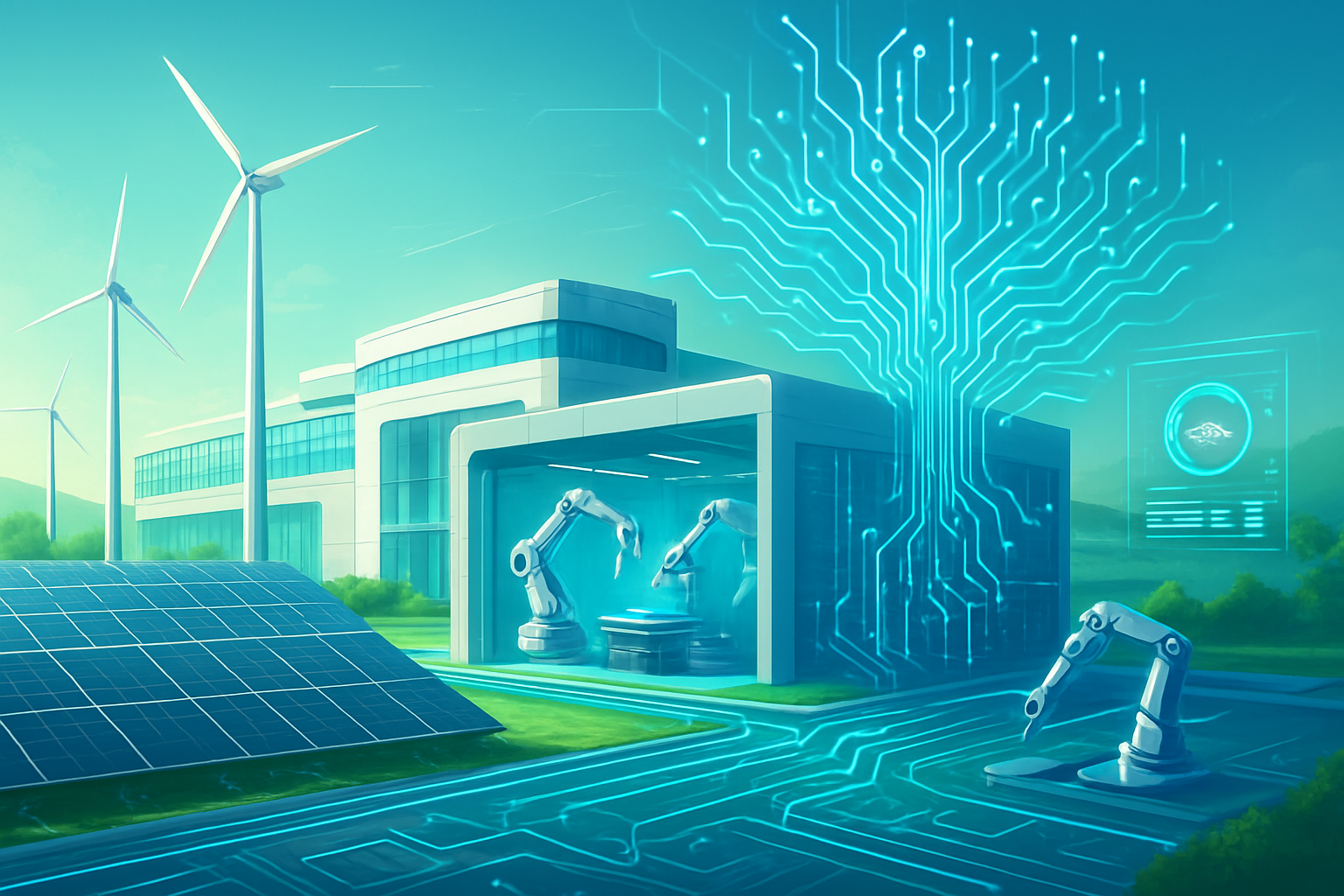Chennai, India – December 3, 2025 – The Indian Institute of Technology Madras (IIT Madras) Incubation Cell (IITMIC) today announced a monumental achievement, having successfully incubated over 500 deep-tech startups since its inception 12 years ago. This landmark milestone, with a total of 511 startups fostered to date, firmly establishes IITMIC as a preeminent force in India's drive for technological innovation and entrepreneurial growth. The announcement underscores a significant acceleration in the nation's capacity to nurture groundbreaking ventures, particularly in critical and complex engineering domains.
This unprecedented growth in deep-tech incubation is not merely a number; it represents a powerful engine for economic development and self-reliance. The startups emerging from IITMIC boast a combined valuation exceeding ₹53,000 crore (approximately US $6 billion) based on their latest venture capital funding rounds, and have collectively generated over 11,000 direct jobs. This robust contribution to the economy and the creation of high-value employment opportunities are pivotal in India's journey towards becoming a global technology leader and realizing the vision of "Viksit Bharat@2047" (Developed India @2047).
Pioneering Deep-Tech Innovation and Impact
The IIT Madras Incubation Cell's success is rooted in its dedicated focus on "deep-tech" startups – ventures that build profound intellectual property and address complex challenges through significant scientific or engineering breakthroughs. Unlike many traditional incubators, IITMIC targets startups operating in "hard sectors" that demand extensive research and development, long gestation periods, and substantial capital investment. These sectors are at the forefront of global innovation, encompassing areas such as orbital launch vehicles with reusable propulsion systems, advanced organ-on-chip platforms, cutting-edge electric mobility solutions (from e-scooters to future flying taxis), sophisticated underwater robotics, quantum security and computing, semiconductor design and manufacturing, climate-tech solutions, advanced Artificial Intelligence (AI) products and machine learning, health tech, manufacturing, defense, aerospace, and biotechnology.
This strategic emphasis on foundational technologies distinguishes IITMIC's approach. It fosters an environment where innovation is not incremental but transformative, leading to the creation of products and services that can disrupt industries and solve pressing societal problems. The incubator provides comprehensive, end-to-end lifecycle support, guiding startups from the initial validation of core science and technology through rapid Minimum Viable Product (MVP) development, early industry pilots, robust governance structuring, and crucial access to smart capital and strategic partners. This holistic support system, bolstered by IIT Madras's strong institutional backbone and global network, is critical for deep-tech ventures that often face higher barriers to entry and longer development cycles.
Initial reactions from the AI research community and industry experts have been overwhelmingly positive, hailing IITMIC's milestone as a testament to India's growing prowess in creating a vibrant deep-tech ecosystem. Prof. V. Kamakoti, Director, IIT Madras, and Chairman for IITMIC's Board of Directors, underscored the national significance, stating, "Viksit Bharat@2047 as envisaged by our Hon'ble Prime Minister will be a matured Startup Nation driving all Atmanirbhar critical technologies. Every journey has its first step, and I strongly believe that IIT Madras Incubation Cell has taken that firm progressive step." Dr. Tamaswati Ghosh, CEO of IITMIC, further highlighted the quality of the incubated ventures, noting, "As we mark this 500-startup milestone in our 13th year, IITMIC has already produced two unicorns, one IPO, and several companies poised to cross the billion-dollar valuation threshold or prepare for public listings in the near future." These successes, emerging from some of the hardest sectors, reinforce the depth of IITMIC's innovation model. The Cell has also seen a remarkable acceleration in its activities, incubating over 100 new deep-tech startups in the financial year 2024-25 alone under its "Startup Shatam" mission, a significant increase from its previous annual average of 60. While 39% of the founders are from IIT Madras, a substantial 61% come from across India, demonstrating the incubator's national reach and commitment to diverse talent.
Reshaping the Tech Landscape: Implications for AI Companies, Giants, and Startups
The proliferation of over 500 deep-tech startups from IIT Madras (IITM) Incubation Cell (IITMIC) is poised to significantly reshape the competitive dynamics across the global technology landscape, with profound implications for established AI companies, tech giants, and emerging startups alike. This vibrant ecosystem is creating a continuous pipeline of innovation that promises both opportunities and challenges for industry players.
The primary beneficiaries are, of course, the incubated startups themselves. Companies like Ather Energy (Private), a pioneer in electric vehicles, Uniphore (Private), a leader in conversational AI, Agnikul Cosmos (Private), advancing space tech with reusable propulsion systems, and Mindgrove Technologies (Private), which designed India's first microprocessor chip, represent the vanguard of this deep-tech revolution. IITMIC's comprehensive support system, from validating core science to facilitating access to smart capital and strategic partners, provides these ventures with a crucial runway for success in inherently complex domains. Beyond the direct incubatees, the broader AI industry stands to gain from the consistent influx of novel AI-driven innovations and specialized talent, expanding the overall capabilities and applications of artificial intelligence.
For major tech giants and established AI labs, IITMIC's success presents a dual scenario of intensified competition and strategic opportunity. The emergence of highly specialized deep-tech competitors, particularly in frontier AI, quantum security, and semiconductor solutions, forces these larger entities to accelerate their own R&D cycles and innovation efforts to maintain market leadership. This "disruption from below" can erode market share if incumbents are slow to adapt. Furthermore, the nurturing of a strong pool of deep-tech talent from IIT Madras and across India creates a more competitive landscape for attracting skilled AI engineers and researchers. Conversely, this robust ecosystem positions IIT Madras as a strategic deep-tech investment destination, offering major players prime opportunities for talent acquisition, strategic partnerships, and even outright acquisitions to integrate cutting-edge technologies and expand into new, high-growth markets.
The disruptive potential extends across numerous sectors. In space technology, startups like Agnikul Cosmos and GalaxEye Space (Private) are challenging traditional aerospace and satellite services by making space access more affordable and efficient, while The ePlane Company (Private) aims to revolutionize urban transport with electric flying taxis. Healthcare and biotechnology are seeing transformations through innovations like "organ-on-chip platforms" and advanced medical devices, potentially rendering existing diagnostic and drug discovery methods obsolete. The electric mobility sector, already impacted by companies like Ather Energy, is set for further shifts. In semiconductors, Mindgrove Technologies directly challenges the global supply chain, while advancements in quantum security promise to disrupt current encryption and cybersecurity paradigms. Finally, specialized AI applications from these startups, focusing on real-time analysis and tailored industry solutions, are poised to disrupt conventional software, automation, and data analytics services by offering more intelligent and efficient alternatives. The strategic advantages for these startups lie in their deep intellectual property, unparalleled access to IIT Madras's research infrastructure and talent, institutional credibility, and a clear ambition for global market penetration, positioning them to compete on an international stage and enhance India's standing as a "Product Nation."
A Blueprint for a Developed India: Wider Significance and Global Positioning
The IIT Madras Incubation Cell's achievement of crossing 500 deep-tech incubations is not merely an institutional triumph, but a pivotal moment in India's journey towards becoming a global technological powerhouse. This milestone profoundly impacts the broader AI landscape, aligns with critical global tech trends, and solidifies India's position as a burgeoning tech hub, while also bringing into focus the inherent challenges of deep-tech growth.
This monumental success fits seamlessly into the broader global AI landscape, where deep technology is increasingly recognized as the engine of future innovation. AI is the undisputed "star" within India's deep-tech sector, with an astonishing 74% of new deep-tech startups in 2023 focusing on AI, and 86% of funded ventures having an AI core. The Indian AI market is projected to reach a staggering $7.8 billion by 2025, with deep-tech innovations, including the burgeoning field of Generative AI, expected to contribute an astounding $1 trillion to India's GDP by 2030. IITMIC's strategic goals—to elevate Indian technologists into the top 2% globally in specific fields and position India among the top five countries in five critical technology sectors—underscore a national commitment to not just participate but lead in the Fourth Industrial Revolution. The IITs, particularly IIT Madras, are proving instrumental in translating cutting-edge academic research into practical AI solutions, fostering invaluable industry-academia collaborations that are critical for such an ambitious vision.
The impact on India's position as a global tech hub is undeniable. This achievement significantly bolsters IIT Madras's reputation as India's premier center for technology-driven innovation, with IITMIC actively "rewriting India's deep-tech playbook" and building "India's deep-tech Engine." India is already recognized as the world's third-largest deep-tech hub, with 480 new ventures established in 2023 alone. The success of IITMIC is positioning IIT Madras as an attractive deep-tech investment destination for global capital and industry partnerships, accelerating India's national vision of becoming a "Product Nation" and a "Startup Nation" on its path to "Viksit Bharat 2047." Tamil Nadu, spearheaded by institutions like IIT Madras, is rapidly emerging as the deep-tech capital of India, with its incubation model serving as a potential blueprint for replication across the country to further catalyze national innovation. The remarkable 80% survival rate of IITMIC-incubated startups, significantly higher than the typical 4-6% outside structured environments, serves as a powerful testament to the efficacy of this model.
However, the rapid growth in deep-tech also brings potential concerns and challenges that require strategic attention. A significant funding crunch saw deep-tech investments decline by 77% in 2023, totaling $850 million, as venture capitalists often shy away from the long development timelines and higher risks associated with deep-tech. The sector also grapples with a notable shortage of highly skilled professionals, as startups struggle to compete with the lucrative offers from established tech giants. Long gestation periods, complex regulatory hurdles in sectors like biotech and health tech, challenges in market adoption for unproven solutions, and the intricacies of intellectual property (IP) protection all pose significant barriers. Furthermore, the compute-intensive nature of deep-tech, especially in AI, highlights the need for sustainable and democratized access to high-performance computing infrastructure. India's relatively low R&D expenditure—less than 1% of its GDP—compared to global leaders, also points to a broader systemic challenge in fostering foundational breakthroughs. While IITMIC's achievement is a milestone in itself, its significance can be likened to historical breakthroughs that catalyzed entire industrial revolutions, with deep-tech poised to add $1 trillion to India's GDP by 2030 and usher in Industrial Revolution 4.0. The "Startup Shatam" mission, incubating over 100 deep-tech startups in a single financial year, is a historic feat, setting a new benchmark for deep-tech entrepreneurship.
The Road Ahead: Future Developments and India's Deep-Tech Horizon
The remarkable milestone of IIT Madras Incubation Cell (IITMIC) incubating over 500 deep-tech startups is not an endpoint, but a powerful launchpad for India's technological future. With strategic plans for aggressive expansion and a clear vision for global impact, IITMIC is set to play an even more pivotal role in shaping the landscape of deep technology and AI in the coming years.
In the near term, IITMIC is focused on solidifying its foundational strengths and accelerating the commercial success of its ventures. Having successfully completed its "Startup Shatam" mission by incubating 104 deep-tech startups in FY 2024-25, the Cell is committed to continuously screening over 100 new startup applications each month, ensuring a robust pipeline of emerging innovations. A key near-term objective is to facilitate global market access for these startups through strategic international collaborations, enhancing mentoring frameworks, and refining go-to-market strategies to cultivate globally competitive multinational companies. Furthermore, IIT Madras's aim to file 366 patents in 2024 underscores a strong emphasis on generating and protecting intellectual property, a critical component for deep-tech success.
Looking towards 2030, IITMIC has unveiled an "Audacious 10x Plan," envisioning a massive scale-up of its deep-tech incubation efforts. This ambitious plan includes ramping up the annual intake of incubatees from approximately 45 to an astounding 1,000 per year, a twenty-fold increase designed to create an unparalleled ecosystem of deep-tech ventures. A crucial element of this long-term strategy is the establishment of a decentralized incubation network, partnering with 50-100 incubators in tier-2, tier-3, and tier-4 institutions across India. This will foster regional innovation, mentor local talent, and standardize incubation processes nationwide. The ultimate goal is to nurture approximately fifty Indian-origin products, each projected to achieve over ₹1,000 crore in annual revenue, thereby creating industry-scale champions and solidifying India's position among the top five countries in five critical technology sectors, aligning perfectly with the "Product Nation," "Startup Nation," and "Viksit Bharat 2047" national visions.
The potential applications and use cases emerging from these deep-tech incubations are vast and transformative. On the horizon are continued advancements in space exploration and defense, with reusable propulsion systems and sophisticated UAV technologies. Health tech and biotechnology will see breakthroughs in organ-on-chip platforms and advanced medical solutions. The mobility sector will evolve further with electric mobility solutions, including electric flying taxis and advanced battery innovations. Artificial Intelligence and quantum computing will drive new frontiers in AI-based products, machine learning, AR/VR, blockchain, quantum security, and fintech, including advanced AI models optimized for low-bandwidth environments. Additionally, innovations in advanced manufacturing, robotics, sustainable technologies (climate-tech, green energy), semiconductor systems, IoT, and cyber-physical systems are poised to address complex global challenges.
However, sustaining this rapid growth necessitates addressing several critical challenges. The inherent long gestation periods of deep-tech ventures, often requiring a decade to yield significant financial returns, clash with the shorter investment horizons of many Indian investors. Consistent access to capital remains a concern, with IIT Madras advocating for a dedicated ₹200 crore venture capital fund and emphasizing the need for government support and risk funds for early-stage investments. Furthermore, the transition from successful prototypes to scalable commercial products and global market penetration requires ongoing strategic partnerships and robust go-to-market strategies. Experts predict a robust future for deep-tech in India, with the market projected to reach $30 billion by 2030, driven by defense innovation and robotics. India is emerging as a trusted, low-cost global hub for deep-tech, serving as the backbone for the next phase of digital growth. Initiatives like the India Quantum Mission, with a budget of over ₹6,000 crores to develop quantum computers and related technologies, underscore a national commitment to leading the quantum revolution, an industry expected to exceed $2 trillion by 2035. These deep-tech startups are not just building businesses; they are solving national imperatives in health access, defense resilience, education parity, and sustainable energy, promising a future where India's technological prowess addresses both local and global challenges.
A New Era for Indian Innovation: Comprehensive Wrap-up and Future Outlook
The milestone of IIT Madras Incubation Cell (IITMIC) surpassing 500 deep-tech incubations marks a pivotal moment in India's journey towards becoming a global leader in technology and innovation. This achievement, culminating in 511 startups over 12 years, is far more than a numerical triumph; it signifies the maturation of a robust ecosystem dedicated to fostering groundbreaking, intellectual property-driven ventures that are reshaping industries and addressing critical societal challenges.
Key Takeaways: The IITMIC portfolio, with a combined valuation exceeding ₹53,000 crore (US $6 billion), has generated over 11,000 direct jobs, underscoring its significant economic impact. These startups are at the forefront of deep technology, developing solutions in complex sectors ranging from reusable propulsion systems for orbital launch vehicles and organ-on-chip platforms to advanced electric mobility, quantum security, semiconductors, climate-tech, and cutting-edge AI products. The Cell boasts an impressive track record, including two "unicorns," one successful IPO (from Ather Energy [NSE: ATHER]), and over 700 patents filed, demonstrating a strong commitment to foundational innovation. The "Startup Shatam" mission, which saw over 100 new deep-tech startups incubated in FY 2024-25, highlights an accelerating pace of innovation, supported by IITMIC's comprehensive lifecycle assistance and a diverse founder base, with 61% of startups originating from outside the IIT Madras community.
Significance in AI History and the Broader Tech Landscape: This development firmly establishes IIT Madras as a leading hub for technology-driven innovation, profoundly contributing to India's deep-tech ecosystem and its aspirations for technological self-reliance. In the context of AI history, IITMIC's focus on advanced AI products and machine learning is particularly crucial, positioning India to capture a significant share of the projected $7.8 billion Indian AI market by 2025. The Cell's success is a tangible manifestation of the "Viksit Bharat@2047" vision, demonstrating how academic institutions can drive the creation of a "matured Startup Nation" powered by "Atmanirbhar" (self-reliant) critical technologies. By translating cutting-edge academic research into viable, industry-ready solutions, IITMIC is not just fostering startups but building the very infrastructure for India's future technological leadership.
Final Thoughts on Long-Term Impact: The long-term impact of IITMIC's sustained efforts promises to be transformative. The ambitious "Audacious 10x Plan" to scale incubation to 1,000 startups annually and establish a decentralized network across India's smaller cities will democratize deep-tech entrepreneurship and unleash a new wave of innovation nationwide. This will lead to the creation of globally competitive "multinational" startups, significantly strengthen India's intellectual property landscape, and drive diverse technological advancements across an array of critical domains. The vision articulated by IIT Madras Director Prof. V. Kamakoti, of potentially witnessing "an IPO every week" from this ecosystem, encapsulates the profound economic and societal shift anticipated. This sustained focus on deep-tech is cultivating a vibrant entrepreneurial culture that will continue to translate scientific research into commercial success, ensuring India's prominent role in the global innovation arena for decades to come.
What to Watch For in the Coming Weeks and Months: As IITMIC continues its trajectory, several key indicators will be crucial to observe. The sustained growth of its startup pipeline, with over 100 new applications screened monthly, will signal the ongoing vitality of the ecosystem. Keep an eye on the accelerated commercial success of existing ventures and any announcements regarding new unicorns or successful IPOs, which will validate the economic potential of deep-tech. Furthermore, IITMIC's intensified focus on strategic sectors such as climate-tech, agriculture, rural-tech, water, sustainability, future factory, and supply chain management could yield significant breakthroughs. Lastly, the expansion of global partnerships and international collaborations will be vital for IITMIC startups to access broader markets and resources, solidifying India's position on the global innovation stage. The journey of IIT Madras Incubation Cell is a testament to the power of strategic incubation in building a technologically advanced and self-reliant nation.
This content is intended for informational purposes only and represents analysis of current AI developments.
TokenRing AI delivers enterprise-grade solutions for multi-agent AI workflow orchestration, AI-powered development tools, and seamless remote collaboration platforms.
For more information, visit https://www.tokenring.ai/.








